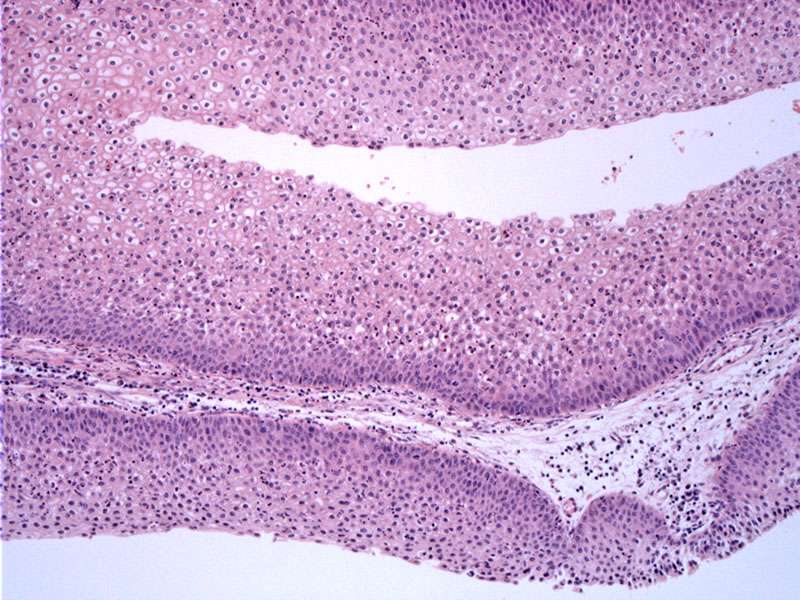

Papillary structures lined by multilayered epithelium without any significant atypia.
Another area of the papilloma exhibits nuclear irregularities, indicative of low grade dysplasia.
Schnederian papillomas are divided into three distinct categories: exophytic, inverted and oncocytic. The exophytic type (also known as septal or fungiform) tends to arise in the nasal septum and in a slightly younger population In contrast, the inverted and oncocytic types arise in the lateral nasal wall and/or the paranasal sinues.
Malignant transformation is very rare in the exophytic types, but a subset of inverted and oncocytic types transform into squamous cell carcinoma and rarely, mucoepidermoid carcinoma, small cell carcinoma, adenocarcinoma and sinonasal undifferentiated carcinoma (Fletcher). The incidence of malignant transformation for inverted SPs has been reported to be 2-27% and 4-17% for oncocytic SPs (Barnes).
Development of carcinoma can be synchronous (61% of cases) or metachronous (39% of cases). The mean interval time between the onset of the inverted (or oncocytic) papilloma and malignant transformation is about 63 months with a range of 6 months to 13 years (Barnes). There are no reliable features in predicting malignant transformation, although presence of moderate or severe dysplasia should be worrisome. Some studies have suggested the HPV 16 and 18 infection may be more carcinogenic than infection with HPV subtypes 6 and 11. Note that HPV infection is in reference to the inverted subtype, as the association of HPV and oncocytic papillomas have not yet been established.
→The inverted and oncocytic subtypes of Scheiderian papillomas may transform into carcinoma.
• Sinonasal : Schneiderian Papilloma, Oncocytic Type
• Sinonasal : Schneiderian Papilloma, Inverted Type
Barnes L. Schneiderian Papillomas and Nonsalivary Glandular Neoplasms of the Head and Neck. Mod Pathol 2002;15(3):279-297.
Fletcher CDM, ed. Diagnostic Histopathology of Tumors. 3rd Ed. Philadelphia, PA: Elsevier; 2007: 83-7.